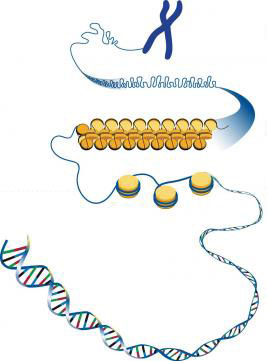PROVIDENCE, R.I. [Brown University] — The genomes of many organisms, humans included, are littered with repetitive sequences of DNA called retrotransposons. In a new “Perspective” in the journal Science, four biologists write that while most retrotransposons have become inert “fossils” over evolutionary time, about 100 such rogue elements are still trying to copy themselves, potentially wreaking havoc on health.

Our genomes keep rogue elements tightly bound and under control, although that control appears to weaken as we age.
Genomes are not oblivious to the threat, note the researchers, including Brown University biologists Stephen Helfand and John Sedivy, senior corresponding author. Our cells keep retrotransposons literally under wraps by winding them up in a tight conformation called heterochromatin. But recent research at Brown and elsewhere has shown that as organisms age, those defensive mechanisms loosen, allowing retrotransposons to emerge, potentially contributing to health problems such as cancer, neurodegeneration, and autoimmune disorders.
“Although aging is perhaps the most basic aspect of life, the mechanisms that explain it remain a puzzle,” the authors write. “Retrotransposon activation brings in yet another dimension: We may be bogged down in a complex host-parasite-like struggle — with evolution acting on both parties — leaving open the possibility for profound collateral damage on our soma.”
Although the battle has been raging within our cells for millions of years, humans may now be able to do something more intentional about it.
“Clearly, letting sleeping dogs lie by keeping them mired in heterochromatin is a compelling strategy,” the essay states. “For this we need drugs targeted at chromatin regulators.”
Among other promising avenues are “reverse transcriptase inhibitor” drugs that treat HIV, albeit with side effects, because they can impede the process by which retrotransposons can spread in the genome, write the authors, who call for further research.
In addition to Sedivy and Helfand, the paper’s other authors are Vera Gorbunova of the University of Rochester and Jef Boeke of New York University.

